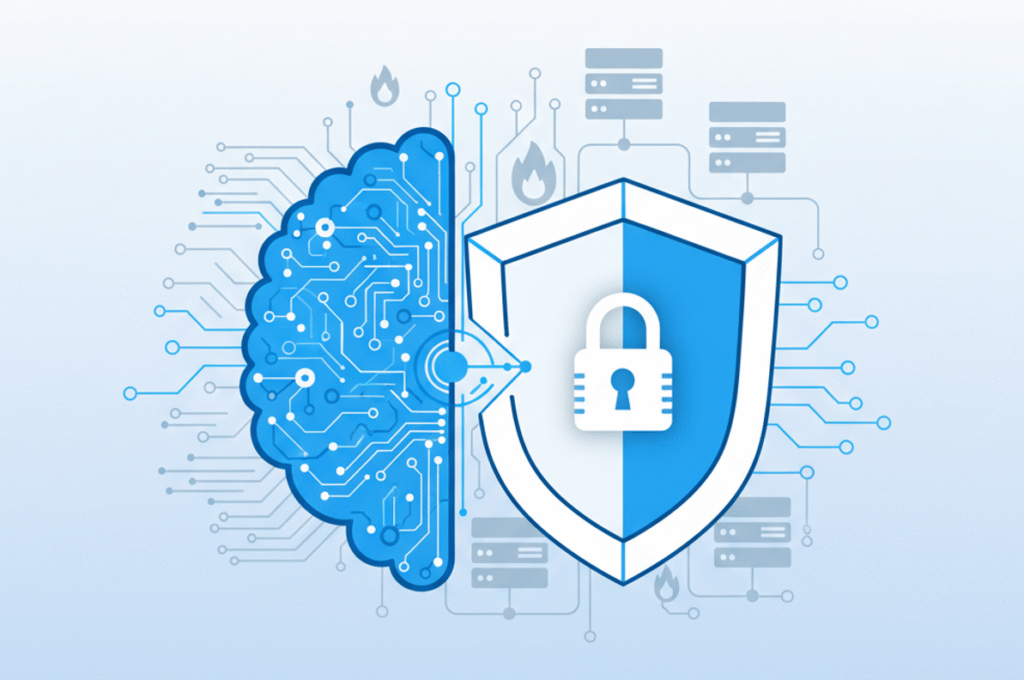Network security has emerged as the bedrock of cyber defenses in the digital age, where data flows seamlessly across the virtual landscape. Regardless of size, organizations rely on robust network security measures to shield sensitive data, thwart cyber threats, and ensure uninterrupted operations. This comprehensive guide delves into the heart of network security, unraveling the importance of 10 crucial components that collectively form a formidable shield against the ever-evolving landscape of cyber risks.
- Firewall Configuration Best Practices
Firewalls are a cornerstone of network security, acting as a barrier between a trusted internal network and potentially untrusted external sources. Proper firewall configuration protects sensitive data and systems from unauthorized access and cyber threats.
A solid firewall configuration involves implementing best practices such as default-deny rules, which restrict traffic by default and only allow explicitly defined exceptions. This approach reduces the attack surface, preventing potential vulnerabilities from being exploited. Furthermore, using the principle of least privilege, where only necessary services and ports are permitted, limits possible avenues for attackers.
Regular firmware updates are essential to keep firewalls protected against known vulnerabilities. Firewalls should also provide logging and monitoring capabilities to detect suspicious activities and unauthorized access attempts. By adhering to these best practices, organizations can establish a strong foundation for network security.
- Intrusion Detection and Prevention Systems (IDS/IPS)
Intrusion Detection Systems (IDS) and Intrusion Prevention Systems (IPS) are pivotal in identifying and mitigating cyber threats. IDS monitors network traffic for patterns that indicate potential attacks, while IPS immediately blocks or prevents those attacks.
Implementing IDS/IPS provides real-time insights into unauthorized activities, enabling rapid response and mitigation. The significance lies in proactively identifying threats, allowing security teams to intervene before substantial damage occurs. These systems help organizations stay ahead of cyber threats and maintain the integrity of their networks and data.
- Network Segmentation Strategies
Network segmentation involves dividing a network into isolated segments with distinct access controls. This approach minimizes the potential impact of breaches, limiting attackers’ lateral movement within the network.
Effective segmentation is achieved by grouping resources based on function and risk level. Critical assets are isolated from less critical ones, reducing the chance of an isolated incident cascading throughout the network. Segmentation strategies bolster network resilience by confining potential breaches and enhancing overall security.
- Wireless Network Security
Wireless networks offer flexibility but introduce vulnerabilities. Proper wireless network security is paramount to prevent unauthorized access and data breaches.
Deploying robust encryption protocols, disabling SSID broadcasting, and utilizing MAC filtering are essential measures. These precautions prevent unauthorized individuals from accessing the network and protect against eavesdropping and interception. By securing wireless networks, organizations ensure the confidentiality of data transmitted wirelessly.
- Denial of Service (DoS) and Distributed DoS (DDoS) Attacks
DoS and DDoS attacks aim to overwhelm network resources, rendering services unavailable. Protecting against these attacks is vital to maintain network availability and operational continuity.
Mitigation techniques involve implementing traffic filtering mechanisms and utilizing load balancing to distribute traffic efficiently. By managing traffic intelligently, organizations can prevent service disruptions and maintain seamless operations even during attack scenarios.
- VPN Technologies and Implementation
Virtual Private Networks (VPNs) establish secure communication channels over public networks. VPNs encrypt data transmission, protecting sensitive information from interception.
Implementing VPNs ensures secure remote access for employees and allows organizations to maintain data confidentiality, especially in remote work scenarios. By leveraging strong encryption and authentication protocols, VPN technologies preserve the integrity of data traversing external networks.
- Secure DNS Configuration
The Domain Name System (DNS) translates domain names into IP addresses, facilitating internet communication. Secure DNS configuration is pivotal to preventing DNS-based attacks and unauthorized redirection.
Implementing DNS Security Extensions (DNSSEC) authenticates DNS data, ensuring users are directed to legitimate websites. Secure DNS practices protect users from potential threats and enhance overall online security.
- Network Access Control (NAC)
Network Access Control (NAC) manages access to the network based on predefined policies. NAC solutions verify user identity, device security posture, and compliance with security policies before granting access.
By enforcing access controls, NAC prevents unauthorized devices and users from entering the network. This enhances data security and safeguards against potential breaches originating from unauthorized access.
- Network Vulnerability Assessment
Regularly assessing network vulnerabilities is a proactive approach to identifying and addressing weaknesses before attackers exploit them.
Vulnerability assessments involve utilizing automated tools to scan networks for vulnerabilities, ranking them by severity. Organizations can then prioritize and remediate vulnerabilities, minimizing the risk of data breaches and cyber incidents.
- Network Traffic Analysis Techniques
Network traffic analysis involves monitoring data flow within a network to detect abnormal patterns and potential threats. This proactive approach enables the identification of unauthorized activities before they escalate.
Techniques such as intrusion detection systems (IDS) and behavioral analysis help organizations recognize deviations from expected network behavior. By analyzing network traffic, security teams can swiftly detect and respond to threats, ensuring operational continuity and maintaining network security.
In this comprehensive overview, we’ve explored the vital aspects of network security, each playing a crucial role in safeguarding organizations from cyber threats. These components collectively contribute to a resilient network defense strategy from firewall configuration best practices to network traffic analysis. By understanding their significance, organizations can take proactive measures to mitigate risks, protect sensitive data, and ensure the ongoing security of their networks.





